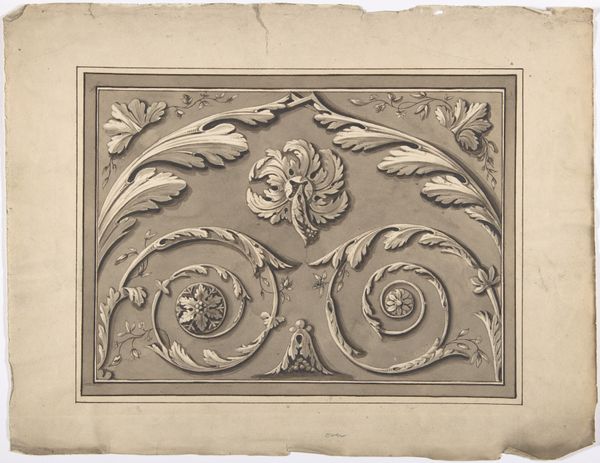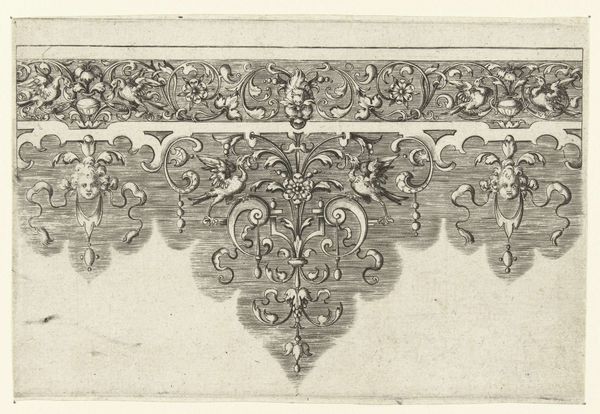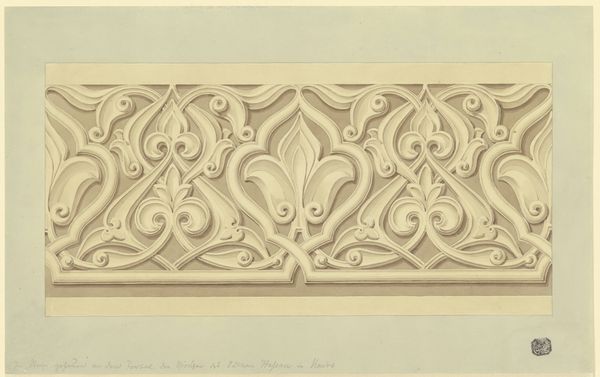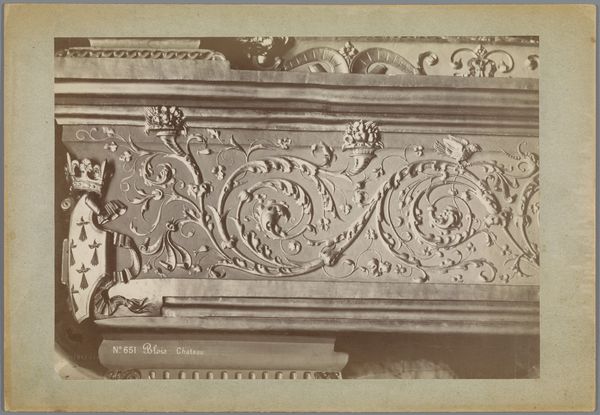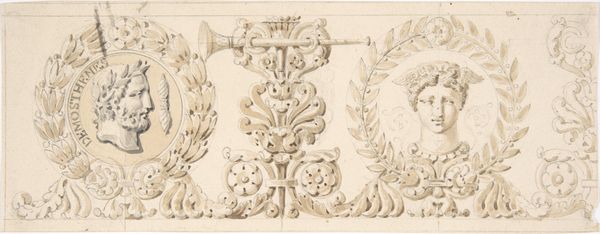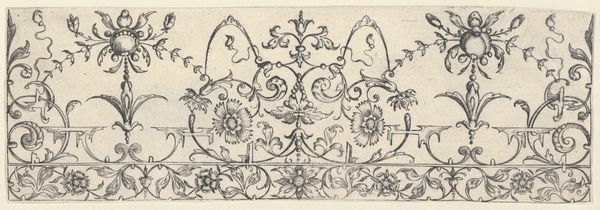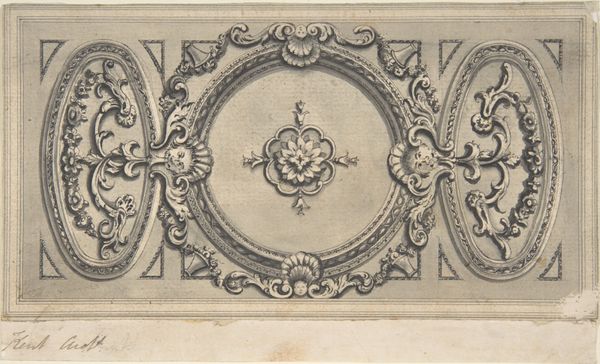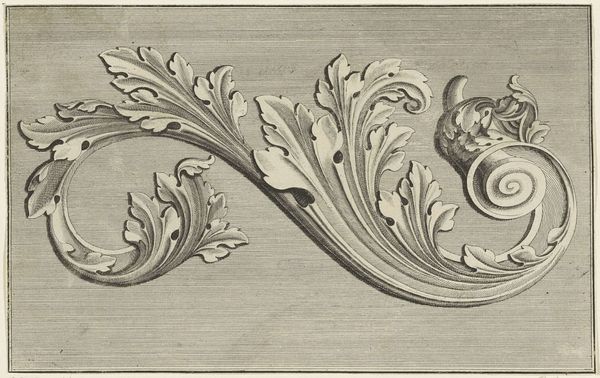
drawing, relief, pencil
#
drawing
#
relief
#
classical-realism
#
coloured pencil
#
pencil
#
academic-art
Dimensions: 385 mm (height) x 541 mm (width) (bladmaal), 382 mm (height) x 535 mm (width) (billedmaal)
Joakim Skovgaard created this graphite drawing of a plaster relief with acanthus tendrils sometime in the late 19th or early 20th century. During this time, academic training emphasized the importance of mastering classical forms through drawing. Skovgaard’s choice of the acanthus motif places him within a lineage of artists who drew inspiration from classical antiquity. Yet, this was also a period of intense national romanticism, especially within the arts. Artists across Europe were turning to their own histories and landscapes. The acanthus leaf, with its associations to ancient Greece and Rome, might seem like an odd choice for an artist seeking to define a distinct national identity. But what if we consider the ways in which Skovgaard, through the very act of drawing, sought to indigenize this classical form, to make it his own? He was after all apart of a generation of artists trying to create a distinctly Nordic aesthetic. What do you feel as you consider the ways in which artists negotiate their relationship to tradition and innovation, to the local and the global?
Comments
No comments
Be the first to comment and join the conversation on the ultimate creative platform.



